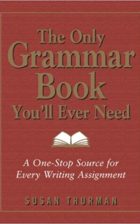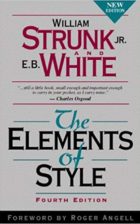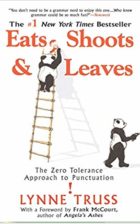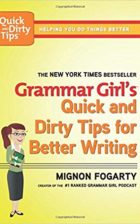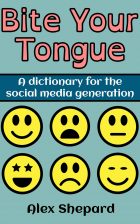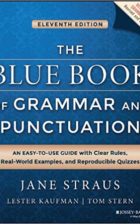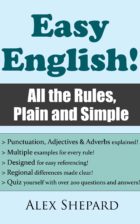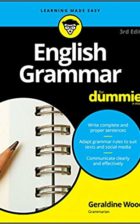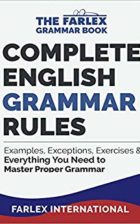Quotation marks are used in pairs to indicate the following: a quotation, a segment of direct speech, or a particular word or phrase.
Like many other punctuation marks, the style in which they are used varies according to region, and different publications will often adopt different styles to best suit their audience. As a result, writers can often be confused about how to use quotation marks correctly.
To avoid any errors in your writing, here is how to use quotation marks correctly:
1. Double vs. Single Quotation Marks
2. Direct vs. Indirect Speech
3. Quotes
3.1 Nested Quotes
4. Block Quotes
5. Scare Quotes
5.1 Phrases with So-Called
1. Double vs. Single Quotation Marks
In American English, the convention is to use double quotation marks:
“Nice to meet you,” said Paul.
The poster in the library says “No talking!”
According to the article, the suspect was “behaving erratically.”
In British English, single quotation marks are usually preferred:
‘Never mind,’ said Paul.
The poster in the library says ‘No talking!’
According to the article, the suspect was ‘behaving erratically’.
As discussed in the section on periods, take note that the period in the last example above is placed after the closing quotation mark. This rule applies to British English and is used in cases where the quoted text is not a full sentence.
Even in British English, however, certain types of publications (such as newspapers, magazines, and children’s books) often prefer to use double quotation marks. This is because they are less likely to be mistaken for apostrophes, particularly by young readers.
When writing, always check for any house style that you need to follow. If there isn’t a guideline in place, then simply stick to the rules of your region, as described above.
2. Direct vs. Indirect Speech
Whenever you write direct speech, you need to use quotation marks to enclose it:
“What time is it?” asked Lucy.
“Never mind,” said Jenny. “I made a mistake with the dates.”
“Stop that thief!” I heard someone shout.
However, when speech is reported indirectly, no quotation marks are used:
Lucy asked what time it was.
Jenny told me not to mind because she made a mistake with the dates.
I heard someone shout for a thief to be stopped.
3. Quotes
Quotation marks are necessary for writers to show that certain words belong to a different source. If you simply copy someone else’s writing without using quotation marks to indicate that the wording isn’t your own, then you are guilty of committing plagiarism (and maybe even copyright infringement). This can ruin a writer’s career and result in a bunch of legal problems. To avoid all this unpleasantness, you need to quote your sources properly.
Here are a few examples for you:
He wrote in his memoir that “even he regretted the outcome.”
The research found that “fewer people emigrated for work” in the last two years.
One of the most famous quotes in the world is “I have a dream.”
3.1 Nested Quotes
How do you punctuate a quote that appears inside of another quote? This depends on the type of quotation marks that you’re using.
If you’re using double quotation marks (the standard for American English), then any second quote that falls inside the main one is marked with single quotation marks:
“Don’t you think ‘The Wasteland’ is a difficult poem?” I asked Beth.
“The sign on the door says ‘No Entry,’” explained the officer.
“I like the song ‘Lullaby’ by The Cure,” I said.
If you’re using single quotation marks (the standard for British English), then mark any quoted material that appears inside another quote with double quotation marks:
‘Don’t you think “The Wasteland” is a difficult poem?’ I asked Beth.
‘The sign on the door says “No Entry”,’ explained the officer.
‘I like the song “Lullaby” by The Cure,’ I said.
4. Block Quotes
If your quote is longer than about four lines, then rather turn it into a block quote instead of adding quotation marks.
To create a block quote, separate it from the surrounding text with a blank line above and below, and indent both of the side margins. Because this identifies the quoted material visually, no quotation marks are used to enclose it:
When I was young, I remember reading this quote:
In order to succeed, we need to challenge what we’re capable of. Only then will we be able to know our true potential. And through that effort, we will no doubt learn that we are capable of achieving more than we had ever imagined. That is the truest measure of success.
These words motivated me to always try my hardest in life.
In the example above, you can see that the quoted material is indented in the middle. If it wasn’t set it as a block quote, you would need to add quotation marks:
When I was young, I remember reading this quote: “In order to succeed, we need to challenge what we’re capable of. Only then will we be able to know our true potential.” These words motivated me to always try my hardest in life.
Since the quoted material here is too short to justify using a block quote, it’s treated as usual with quotation marks.
5. Scare Quotes
When a specific word or phrase needs to be singled out, you can identify it using quotation marks.
Her baby’s first word was “Daddy.”
My sister never spells “Wednesday” correctly.
What do they call “French fries” in England?
Italics can also be used to identify words instead of quotation marks.
When you want to show that a word is being used ironically, you can place it inside scare quotes. These indicate that the word shouldn’t be taken at face value:
Many “self-aware” people are oblivious to their own shortcomings.
You never should have listened to that “doctor” of yours.
That man’s so-called “lessons” were nothing more than bullying.
Avoid overusing scare quotes. They give the text a disjointed feel, and the writing will be clearer and stronger without them.
5.1 Phrases with So-Called
Have a look at the third example above. When you use the phrase “so-called,” it is actually preferred not to use quotation marks around the word or phrase that follows it. This is because “so-called” itself already does the job of identifying what follows it as being ironic or inaccurate.
This isn’t a fixed rule, however. Sometimes you need to use quotation marks after “so-called” in order to avoid ambiguity, especially when you are only emphasizing part of a phrase:
That so-called “non-drowsy” painkiller didn’t work!
By marking “non-drowsy” with scare quotes, we are indicating that this phrase is key to understanding the irony in the sentence. If we didn’t use scare quotes, the meaning could be interpreted differently:
That so-called non-drowsy painkiller didn’t work!
Now the phrase “so-called” might not refer only to “non-drowsy” but to the whole phrase “non-drowsy painkiller.” This alters the writer’s intended irony and makes the sentence ambiguous: Did it make the person sleepy? Or did it not offer pain relief?
What matters is that you always aim for clarity in your writing. And that is what punctuation is for.
For more help with your grammar, check out these fantastic books:
